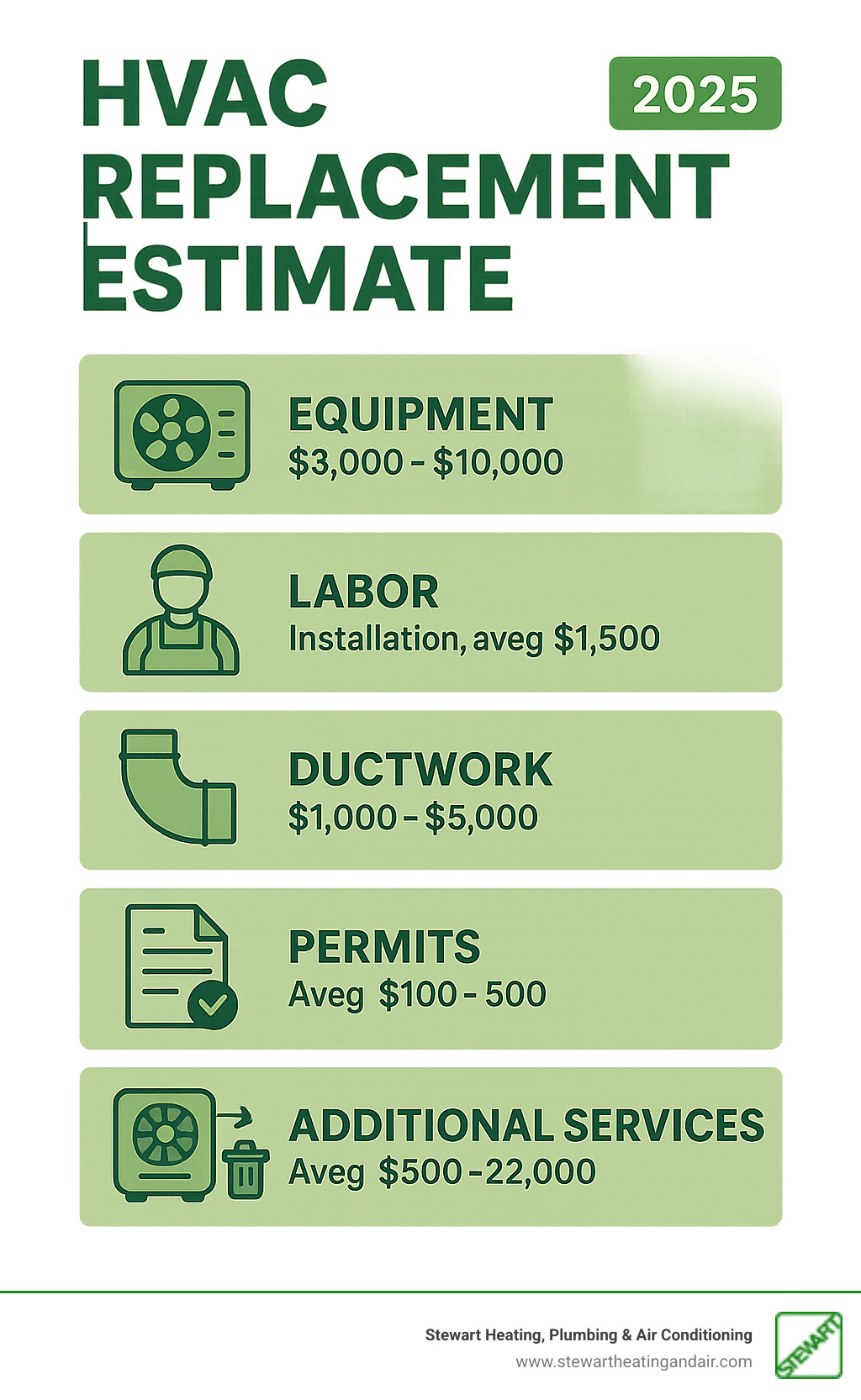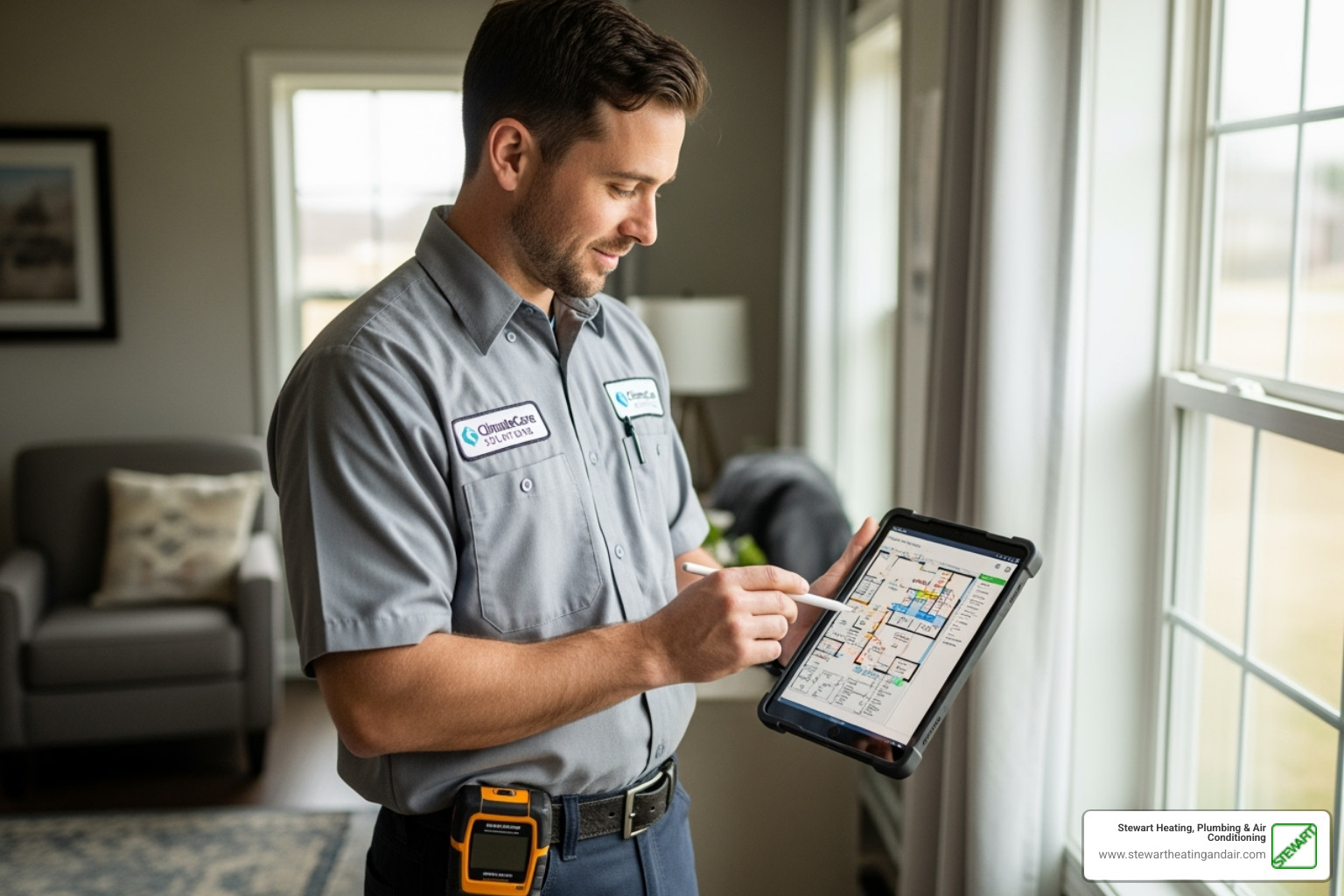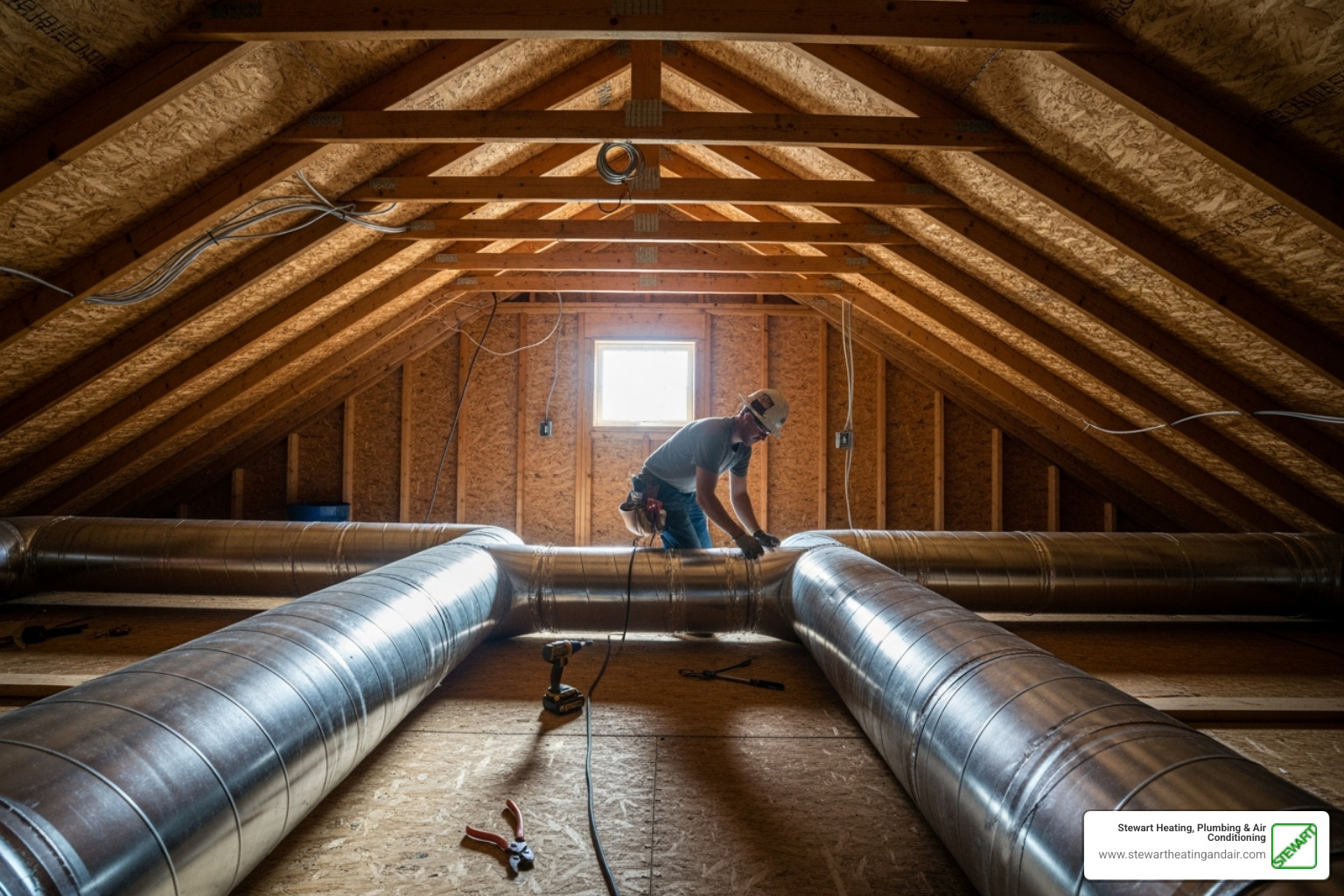
Why Getting an Accurate HVAC Replacement Estimate Matters
Getting an HVAC replacement estimate can feel overwhelming when you're facing a system breakdown or planning an upgrade. Here's what you need to know right away:
Key Components of an HVAC Replacement Estimate:
- Equipment costs - The actual HVAC unit (furnace, AC, heat pump)
- Labor costs - Professional installation typically runs $1,500 on average
- Additional materials - Ductwork, thermostats, permits, and connections
- System removal - Disposal of your old equipment ($60-$500)
- Total range - Complete replacements typically cost $5,000-$30,000
When your HVAC system starts acting up after 10-15 years, or your energy bills keep climbing, you need reliable cost information to make smart decisions. The right estimate helps you budget properly and avoid surprises that could strain your finances.
As one homeowner shared in a recent forum discussion: "I was quoted $15k-$30k through one company, but after getting multiple quotes from local contractors, I found much better options." This highlights why understanding estimate components is crucial for protecting your investment.
Multiple factors affect your final cost - from your home's size and local labor rates to the efficiency ratings you choose. Getting estimates that break down these elements helps you compare options fairly and spot potential overcharges.

Understanding the Average HVAC Replacement Cost in 2025
Getting an HVAC replacement estimate in 2025 means navigating costs that vary dramatically based on your specific needs. Every home is different; a 1,200 square-foot ranch has different requirements than a two-story colonial. This is why estimates range so widely, and understanding the typical costs helps you prepare.
| HVAC System Type | Average Cost Range (Unit + Installation) | Pros | Cons |
|---|---|---|---|
| Central Air Conditioner | $3,900 - $7,900 | Effective cooling for whole home, improved indoor air quality (with filtration) | Only cools, requires ductwork, can be less efficient if ducts are leaky |
| Gas Furnace | $3,800 - $12,000 | Powerful heating, cost-effective in areas with natural gas, reliable | Only heats, requires gas line, produces combustion byproducts |
| Electric Furnace | $1,700 - $7,100 | Lower upfront cost, no gas line needed, safe operation | Higher operating costs in many regions, less powerful heating for large homes |
| Heat Pump | $4,200 - $7,600 | Provides both heating and cooling, highly energy-efficient, environmentally friendly | Less effective in extreme cold (may need supplemental heat), higher upfront cost than AC/furnace combo |
| Geothermal System | $15,000+ | Extremely energy-efficient, very low operating costs, long lifespan | Very high upfront installation cost, requires significant ground disturbance |
National Average Costs
Most homeowners can expect to invest between $5,000 and $12,500 for a standard HVAC replacement. For a complete system overhaul with new ductwork, advanced features, or a larger home, costs can climb to $30,000 or more.
Labor makes up a significant chunk of your total investment, typically about one-third of the project cost. This skilled work covers removing your old system, installing the new one, and testing every component. Your location also plays a role. Urban areas often have higher labor costs due to increased demand and stricter building codes, while rural areas may have lower rates but fewer available contractors.
Cost Breakdown by HVAC Unit Type
Here is a breakdown of what you can expect for different system types:
Central air conditioners ($3,900 - $7,900) are the standard for whole-home cooling, especially in California. Cost depends on cooling capacity and energy efficiency.
Gas furnaces ($3,800 - $12,000) are often paired with central ACs. They offer powerful, reliable heating for homes with natural gas lines.
Electric furnaces ($1,700 - $7,100) have a lower upfront cost and are ideal for homes without gas lines. Operating costs depend on local electricity rates.
Heat pumps ($4,200 - $7,600) provide both heating and cooling in one efficient unit, making them a smart choice for California's mild climate.
Geothermal systems (starting at $15,000) are a premium option with a high upfront cost. They use the earth's stable temperature for extremely efficient heating and cooling, offering significant long-term savings on utility bills.
Key Factors That Influence Your HVAC Replacement Estimate
Understanding basic unit costs is just the beginning. Several other important factors can significantly change your final investment, turning a straightforward equipment swap into a comprehensive home comfort upgrade.

How System Size and Efficiency Affect Your HVAC Replacement Estimate
Getting the right size system is crucial. It's more complex than just square footage; a proper load calculation considers insulation, windows, ceiling height, and home orientation. An oversized system costs more and "short cycles," wasting energy. An undersized system runs constantly without providing comfort. Both waste money.
HVAC capacity is measured in BTUs (heating/cooling power) and tons (cooling capacity, where one ton = 12,000 BTUs). Most homes need a 1.5 to 5-ton system.
Energy efficiency ratings also impact cost and long-term savings. Higher-efficiency units cost more upfront but reduce utility bills. Key ratings include:
- SEER (Seasonal Energy Efficiency Ratio) for cooling.
- AFUE (Annual Fuel Utilization Efficiency) for furnaces.
- HSPF (Heating Seasonal Performance Factor) for heat pumps.
Choosing ENERGY STAR certified systems ensures you get equipment meeting strict efficiency guidelines, saving you money over time.
Installation Complexity and Labor
Your home's unique characteristics affect your HVAC replacement estimate. The layout and accessibility of your current system make a huge difference in labor costs. A cramped crawl space is more difficult to work in than an accessible utility room. Attic installations often require more time and effort than basement work.
Local labor rates vary significantly by region. Skilled, licensed HVAC technicians deserve fair compensation for their expertise, which ensures your new system runs efficiently for years.
Required permits and inspections typically run a few hundred dollars and ensure your installation meets local safety and building codes. Electrical work is often necessary for newer systems with different power requirements, and plumbing connections for condensate drains are also a factor.
When to Repair vs. Replace Your System
Deciding whether to repair or replace can be tough. Here are clear signs that replacement is your best bet:
- Age: Your system is over 15 years old. ACs and heat pumps last 10-15 years, while furnaces can last 15-20 years. Beyond this, efficiency drops and breakdowns are more common.
- Frequent Breakdowns: If you're constantly calling for repairs, the costs can add up quickly, and you're still left with an aging, unreliable system.
- Rising Energy Bills: A noticeable increase in your utility bills often indicates your system's efficiency is declining.
- Strange Noises or Smells: Grinding, banging, or burning odors can signal serious internal problems that are expensive to fix.
- Poor Air Quality: Increased dust or humidity issues may mean your system is no longer filtering or managing moisture effectively.
The 50% rule is a helpful guideline: if a repair costs 50% or more than a new system, replacement usually makes more financial sense and comes with a new warranty.
Uncovering Additional Costs Beyond the Unit
When planning your HVAC replacement estimate, it's easy to focus on the unit itself. However, supporting components and services are crucial for the system to run efficiently. Just as a car needs wheels, your HVAC system needs proper ductwork, connections, and potential upgrades to perform correctly.

Ductwork, Vents, and Drains
A high-efficiency HVAC system is only as good as its ductwork. Leaky, undersized, or damaged ducts can prevent energy savings and reduce comfort. A thorough ductwork inspection is essential before installation, especially in older homes.
Solutions range from duct sealing to repair or full replacement. While these improvements add to your HVAC replacement estimate, they pay off in comfort and lower energy bills. Other key components include condensate drain lines, which must be clear to prevent water damage, and properly sized registers and vents to ensure good airflow.
Essential Add-ons and Upgrades
Modern HVAC technology offers features that can transform your home's comfort. While these upgrades add to your initial investment, they provide excellent long-term value.
Upgrading to a smart thermostat allows for intelligent scheduling, remote control via your phone, and potential utility rebates, leading to significant savings. You can explore options on CNET's smart thermostat guide.
Zoning systems are a game-changer for larger homes, allowing you to create different temperature zones for customized comfort and energy savings.
Whole-home humidifiers and dehumidifiers integrate with your HVAC system to maintain optimal moisture levels, which protects your home's structure and improves comfort.
Air purifiers, UV lights, and advanced filtration systems can dramatically reduce allergens and pollutants, creating a healthier living environment, which is especially valuable for those with allergies or respiratory issues.
How Additional Services Impact Your HVAC Replacement Estimate
Several essential services ensure your installation is safe and compliant. These are necessary parts of a professional installation.
Old unit removal and disposal is complex because old systems contain refrigerants that require proper recovery according to environmental regulations.
In older homes, asbestos may be present around old ductwork. This requires specialized handling by certified professionals for your family's safety.
Occasionally, a new system might require minor structural modifications, like creating a larger opening or building a new concrete pad for the outdoor unit.
A comprehensive HVAC replacement estimate should account for all these potential costs, giving you a complete picture of your investment.
How to Save Money on Your New HVAC System
While an HVAC replacement is a significant investment, there are smart strategies to help manage your HVAC replacement estimate and potentially save a considerable amount of money. The key is knowing when to buy and how to take advantage of the financial incentives available to homeowners like you.

Timing Your Replacement
One of the easiest ways to save money on your HVAC replacement is simply choosing the right time to schedule the work. It's a lot like buying a winter coat in March – timing can make all the difference in your wallet.
Think about when HVAC contractors are busiest. During those sweltering summer days when air conditioners are working overtime, or in the dead of winter when furnaces are pushed to their limits, contractors are in high demand. This surge in emergency calls and urgent replacements naturally drives up both equipment and labor costs.
Off-season installation during spring and fall offers a completely different experience. Contractors have more availability, which often translates to more competitive pricing and flexible scheduling. You're not competing with dozens of other homeowners who need their systems fixed right now. Instead, you can take your time, compare options, and potentially negotiate better terms.
Beyond the immediate savings, scheduling your replacement during these shoulder seasons means you'll have your new system ready before the extreme weather hits. No more crossing your fingers and hoping your old system makes it through another brutal summer or frigid winter.
Leveraging Rebates and Tax Credits
The government and utility companies actually want to help you upgrade to a more efficient HVAC system. Why? Because energy-efficient homes reduce overall demand on the power grid and help environmental goals. This creates a win-win situation where you save money while contributing to broader energy conservation efforts.
Manufacturer rebates pop up regularly throughout the year, especially on high-efficiency models. These aren't small amounts either – they can represent substantial savings on your HVAC replacement estimate. Your contractor should know about current rebate programs and help you time your purchase to take advantage of them.
Utility company incentives are another goldmine many homeowners overlook. Your local gas and electric companies often provide cash rebates for upgrading to energy-efficient equipment. They'd rather pay you to use less energy than build new power plants to meet growing demand. It's a smart business strategy that puts money back in your pocket.
The federal tax credit program through ENERGY STAR can be particularly valuable. Unlike a deduction that reduces your taxable income, a tax credit directly reduces what you owe the IRS dollar-for-dollar. If you qualify for a substantial credit, it's like getting a significant discount on your new system.
Don't forget to check for state and local programs as well. Many regions offer additional incentives or grants for energy-efficient upgrades, especially if you live in an area with strong sustainability goals. These programs can stack with federal credits and utility rebates, multiplying your savings.
The beauty of these incentives is that they make high-efficiency systems much more affordable upfront, while also delivering lower utility bills for years to come. It's like getting paid twice for making a smart investment in your home's comfort and efficiency.
Frequently Asked Questions about HVAC Replacement
When homeowners start researching their HVAC replacement estimate, they usually have similar concerns. Here are the most common questions we hear from families in Pittsburg and throughout Contra Costa County.
Should I replace my furnace and air conditioner at the same time?
This is a common question, as furnaces often outlast air conditioners. However, we strongly recommend replacing them together. Modern HVAC systems are designed as matched pairs to work together for optimal efficiency. Pairing a new, high-efficiency AC with an old furnace means the new unit won't achieve its advertised SEER rating.
From a financial standpoint, a single installation saves on labor costs compared to two separate jobs. Manufacturers also typically offer better warranties on complete, matched systems. Replacing both at once provides peace of mind and prevents the headache of your old furnace failing shortly after you've replaced the AC.
What is the typical lifespan of an HVAC system?
The lifespan of your HVAC system depends on several factors, including climate and maintenance. Here in California, we see predictable patterns:
- Air conditioners: 10-15 years
- Furnaces: 15-20 years
- Heat pumps: 10-15 years (they work year-round)
What truly determines if a system reaches its maximum lifespan is regular maintenance. Well-maintained systems often exceed their life expectancy, while neglected units fail prematurely. Annual tune-ups are crucial here in Contra Costa County.
How do I choose a reliable HVAC contractor?
Choosing the right contractor is as important as the system itself, as proper installation is key to performance.
- Get Multiple Quotes: Obtain at least three detailed, written estimates to compare systems, approaches, and value—not just the price. A good HVAC replacement estimate will be fully itemized.
- Check Reviews and Credentials: Read online reviews on platforms like Yelp, Google, and the BBB. Always verify the contractor's license and insurance for your protection.
- Ask for References: Speak with recent customers to get honest feedback about their experience.
- Trust Word-of-Mouth: Recommendations from friends and neighbors are often the most reliable way to find a quality contractor.
Get a Precise and Professional HVAC Estimate
Making the decision to replace your HVAC system doesn't have to feel overwhelming. Armed with the knowledge we've shared about average costs, the factors that influence pricing, and smart ways to save money, you're now ready to move forward with confidence on your replacement project.
We've covered a lot of ground together – from understanding how system size and efficiency ratings affect your HVAC replacement estimate to uncovering those hidden costs that can catch homeowners off guard. You now know the difference between a basic unit swap and a comprehensive system upgrade, and more importantly, you understand why getting multiple detailed estimates is so crucial for making an informed decision.
The next step is connecting with professionals who will treat your home like their own. A quality installation makes all the difference between a system that performs beautifully for years and one that becomes a source of frustration and unexpected expenses. The expertise of your installation team directly impacts your system's efficiency, longevity, and your overall satisfaction.
At Stewart Heating, Plumbing & Air Conditioning, we've built our reputation on doing things right the first time. Our approach centers on quality workmanship and genuine customer satisfaction – values that show in our high referral business and the trust homeowners place in us throughout Pittsburg, CA, and Contra Costa County. We serve communities including Walnut Creek, Orinda, Oakley, Martinez, Lafayette, Danville, Brentwood, Alamo, Pleasant Hills, Antioch, and Concord with the same commitment to excellence.
When you're ready to take the next step, we're here to provide you with a thorough, transparent estimate that covers all the details we've discussed. Get your professional HVAC replacement estimate today and find what the Stewart difference means for your home's comfort and your peace of mind.







